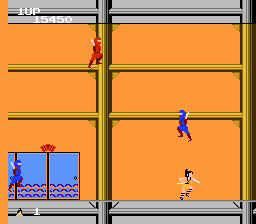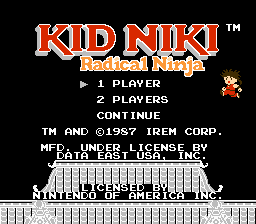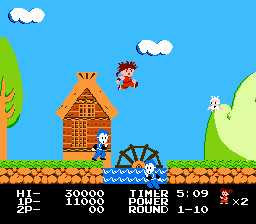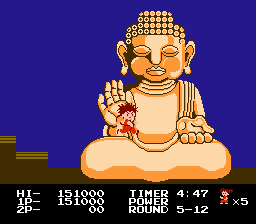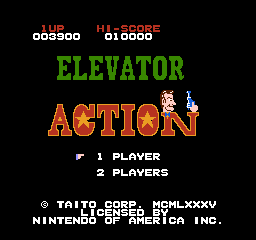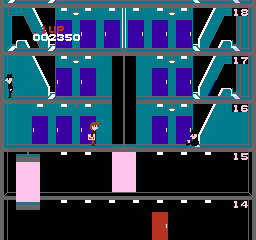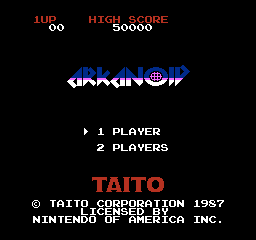Publisher: Taito
Year: 1987
Genre: Platform
In The Legend of Kage, you are a young ninja whose bride was stolen by other ninjas. You need to kill those ninjas and retrieve her so she can be kidnapped again in the bizarre ninja version of the circle of life.
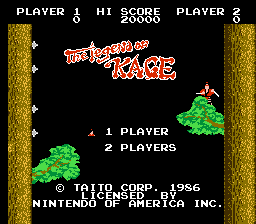
Gameplay is fairly straightforward – some levels require you to move to the end and defeat a sort of one-hitpoint-wonder boss. Other levels require you to kill a certain number of ninjas. Still others require that you just scale to the top of an impossibly tall wall. Whatever the case, Unless you grab the orb-of-lets-you-get-hit-one-extra-time, you die one hit, and hits often happen arbitrarily, owing to the frequency with which ninjas throw shurikens in random direction and your (admittedly realistic) inability to control a jump after you leave the ground.
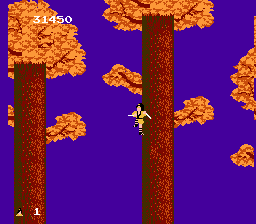
John’s Rating: 2.5 out of 5. With repetitive and painfully arbitrary gameplay, a dearth of enemy varieties, clumsy controls and poor hit detection, the Legend of Kage might be enjoyable to play through once or twice, but it wears quickly and ages poorly.
